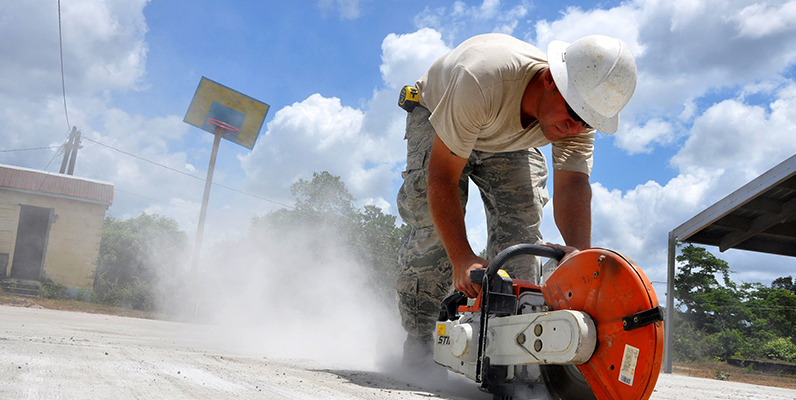
Construction dust is an air pollutant that can cause serious health complications, especially when the exposure is prolonged. These air-particles can be inhaled and accumulate inside the lungs affecting the normal respiration and could potentially be fatal to humans.
Construction Dust Types
In construction sites, there are three main kinds of dust particles that are produced. These types of dust are:
Silica Dust – This particle is produced when the material used in the construction contains silica. Silica, or crystalline silica, is a mineral that is present in materials like stone, sand, mortar, and concrete. Silica dust or respirable crystalline silica (RCS) are very fine particles that are produced when cutting or grinding stone and other silica-containing materials.
Wood Dust – This particle is created from shaping and cutting hardwood, softwood, and wood-based materials such as plywood and medium-density fibreboard (MDF) in construction sites.
Low Toxicity Dust / Non-Silica Dust – These particles and debris are created when working with materials that contain little or no silica. Examples of these materials are gypsum, marble, limestone, cement, and dolomite.
Settling of Construction Dust
The settling time of construction dust can depend on the size of the particles. For construction dust made of dense particles, the settling time is shorter and may be observed on the construction ground. However, finer and light particles may remain dispersed through the air for an extended period. This type of dust particle can enter the respiratory system through inhalation. While fine particles can migrate to the lungs, larger particles tend to get stuck on the airways, particularly in the nose and throat.
Dust Control
Two common ways to effectively manage dust on construction sites are:
Water / Dust Suppressant Additives – Spraying water onto the problem area can help to weight down dust particles. When dust particles are combined with water it makes them heavier and unable to stay in the air for as long. Dust suppressant additives also have many additional benefits and can be added to the water used to spray the dust.
Extraction – An on-tool extraction can remove the dust particles as it is generated. This utilises a system called Local Exhaust Ventilation that captures and extracts particles for effective dust control.
Other Control Measures:
Wearing of Respiratory Protective Equipment (RPE) – Face masks are designed to protect the worker from inhaling large amounts of dust particles. These are to be worn properly to get the protection that the masks are intended for.
https://www.high-endrolex.com/25
Limiting the number of people – This may be achieved by formulating a rotating task schedule of workers on the construction site. This is to avoid the prolonged exposure of workers in the dusty area as well as controlling the number of people creating dust particles at the same time.
Mechanical ventilations – General mechanical ventilation may be installed on the work site for the removal of the dusty air.
Dust control and management on construction sites are important for the health and safety of all employees and the local community. Construction site workplaces should follow their local regulations that are relevant to their circumstances.
